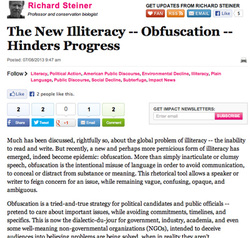For years I have served up a three-course menu to plain language clients — Assess, Build and Communicate. Now, Lynda Harris, from New Zealand’s Write Limited, has laid down a five-course approach, using the Rewrite for Change™ Model, in her new book Rewrite: How to overcome daily sabotage of your brand and profit. Are more courses in the plain language meal really better? I reviewed the book to get a taste of her approach.
In my own business, I start by walking clients through the 5 Ws to Assess and get a clearer picture of the problem. Then we Build and serve solutions, offering style guides and assessments; rewriting and editing; training and coaching champions. We wrap up with the Communicate portion: the focus is on spreading the word about project success and future plans.
But Rewrite looks at a five-ingredient recipe (Rethink, Reboot, Reinvent, Replay, Reinforce). Step two is a total Reboot — a ‘radical change in writing style’. Perhaps ‘radical’ is the approach we really need in concocting the next wave of plain language consulting services, to get people to keep coming back for more.
Clients, regardless of their project scope or focus, often:
· come for plain language services late in a project
· see it primarily as an editing stage, not a process
· don’t connect the dots between communication and their bottom line.
But Harris sees the link between words and money as a key ingredient to success — or failure. And she speaks directly to the decision makers in organisations to give them a taste of her approach.
Read the full blog here...


 RSS Feed
RSS Feed
